You Too Can Have a Bigger Graph
 We confess to occasionally indulging in the optimistic whimsy that if we humans would only recover the common sense to let nature be nature, and maybe help her out by planting a few trees, the climate crisis would be over quite quickly. Then in a darker rebound, we despair that indeed we are really a very dumb species and probably will be doing creation a favor by going extinct, and moreover, let’s hope we do it soon enough so that fewer other species will be harmed in the process.
We confess to occasionally indulging in the optimistic whimsy that if we humans would only recover the common sense to let nature be nature, and maybe help her out by planting a few trees, the climate crisis would be over quite quickly. Then in a darker rebound, we despair that indeed we are really a very dumb species and probably will be doing creation a favor by going extinct, and moreover, let’s hope we do it soon enough so that fewer other species will be harmed in the process.Do we need to be reminded by more Doomer Porn? The greatest impediment to Earth’s ecological recovery is not her ability to heal. Our planet still has that, even at this late date. The greatest impediment is human cultural and cognitive inertia.
In our naivete, we used to think that humans might stand a chance at culture change, but the more we learn about neurobiology, the more it seems we sapiens are locked into a primate brain that is determined to retain more reptilian instincts and reject anything sounding vaguely angelic.
Lately, credible scientific research tells us that a lack of information is not the problem. No amount of public opinion mustering will matter, so trying to educate is a lost cause.
What could change the equation? Don’t really know that yet. We are pinning hopes on raising on permaculture army, but who can say? Hang on for the ride. The best is yet to come.
Here are more than 40 visual images of what is transpiring in the real world, outside our cultural filters. Beyond this point, as Robert Scribbler said, "We're gonna need a bigger graph."
“There is a possibility that this gradual global warming could lead to a relatively abrupt slowing of the ocean’s thermohaline conveyor, which could lead to harsher winter weather conditions, sharply reduced soil moisture, and more intense winds in certain regions that currently provide a significant fraction of the world’s food production. With inadequate preparation, the result could be a significant drop in the human carrying capacity of the Earth’s environment.”Climate Institute 2003 Report
“Many of the most memorable and devastating storms in eastern North America and western Europe, popularly known as superstorms, have been winter cyclonic storms, though sometimes occurring in late fall or early spring, that generate near-hurricane force winds and often large amounts of snowfall. Continued warming of low latitude oceans in coming decades will provide more water vapor to strengthen such storms. If this tropical warming is combined with a cooler North Atlantic Ocean from AMOC slowdown and an increase in midlatitude eddy energy, we can anticipate more severe baroclinic storms.”- Hansen et al. 2015, Ice melt, sea level rise and superstorms: evidence from paleoclimate data, climate modeling, and modern observations that 2C global warming could be dangerous.
“Doubling times of 10, 20 or 40 years yield multi-meter sea level rise in about 50, 100 or 200 years. Recent ice melt doubling times are near the lower end of the 10–40-year range, but the record is too short to confirm the nature of the response.”- Hansen et al. 2015, Ice melt, sea level rise and superstorms: evidence from paleoclimate data, climate modeling, and modern observations that 2C global warming could be dangerous.
“Many of the most memorable and devastating storms in eastern North America and western Europe, popularly known as superstorms, have been winter cyclonic storms, though sometimes occurring in late fall or early spring, that generate near-hurricane force winds and often large amounts of snowfall. Continued warming of low latitude oceans in coming decades will provide more water vapor to strengthen such storms. If this tropical warming is combined with a cooler North Atlantic Ocean from AMOC slowdown and an increase in midlatitude eddy energy, we can anticipate more severe baroclinic storms.”- Hansen et al. 2015, Ice melt, sea level rise and superstorms: evidence from paleoclimate data, climate modeling, and modern observations that 2C global warming could be dangerous.
We show that long-term fluctuations of war frequency and population changes followed the cycles of temperature change. Further analyses show that cooling impeded agricultural production, which brought about a series of serious social problems, including price inflation, then successively war outbreak, famine, and population decline.- Zhang, et al, 2007. Global climate change, war, and population decline in recent human history
Hand in hand with the skimpy ice cover, temperatures across the Arctic have been extraordinarily warm for midwinter. Just before New Year’s, a slug of mild air pushed temperatures above freezing to within 200 miles of the North Pole. That warm pulse quickly dissipated, but it was followed by a series of intense North Atlantic cyclones that sent very mild air poleward, in tandem with a strongly negative Arctic Oscillation during the first three weeks of the month.- Jeff Masters, Wunderground
The normal climate of North America in 2095 under business as usual warming (i.e. no Paris agreement) according to a 2015 NASA study. The darkest areas have soil moisture comparable to the 1930s Dust Bowl:
In the 1993 blockbuster movie "Jurassic Park," a sleazy scientist played by Jeff Goldblum quips that "life finds a way." For real biologists, climate change is like a massive, unplanned experiment, one that may be too fast and strange for some species to survive it.- Colorado Bob
Solomon et al., 2011. Warming World: Impacts by Degree, based on the National Research Council report, Climate Stabilization Targets: Emissions, Concentrations, and Impacts over Decades to Millennia
[I]f indeed Sivaram (Foreign Affairs) and Revkin (The New York Times) are joining all the nations of the world in acknowledging that 1.5°C is the preferred target for humanity, then we are in a “hair on fire” moment.- Joe Romm, Climate Progress
- American Museum of Natural History Science UpdatesIncreased temperatures from global warming are decreasing rain and snowfall and are increasing evaporation in the Colorado River watershed. This is reducing runoff into the reservoirs. The team predicts the water storage in Lakes Mead and Powell has a 50 percent chance of becoming exhausted by 2021 if climate change reduces runoff as predicted and if water consumption continues at current levels. This scenario would have dire consequences for the American Southwest.
The world is just not prepared to handle large scale abrupt changes, most of us never learned to grow our own foods, we just go to the supermarket and pick whatever we want from the refrigerator. Unless we learn to accelerate our efforts to keep pace with the system change required to stop all the developments, we risk that parts of the world become uninhabitable, and turmoil which could even lead to nuclear war.
The growth of our civilization reached a threshold, which will test our species capabilities, especially our intelligence in regards to how we manage future states of our environment. We can either try to stay in the realm of ecosystem boundaries (basically as far as possible back to a planet with around 280 ppm CO2 in the atmosphere), or we can keep acting situational and experimenting with the Earth’s climate.
The majority of us is still using the same old technologies, and thinking which caused the climate crisis in the first place.- Chris Machens, ClimateState, based in Berlin.








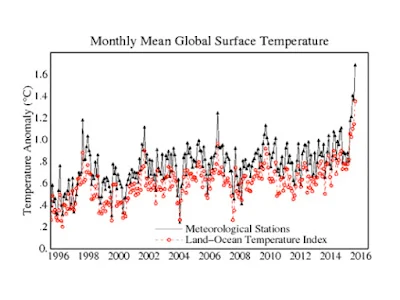











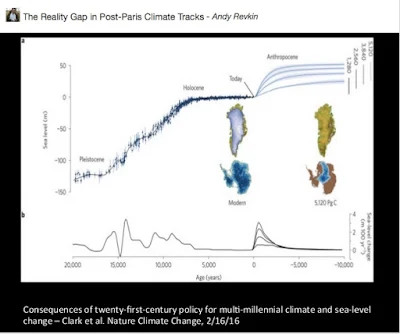
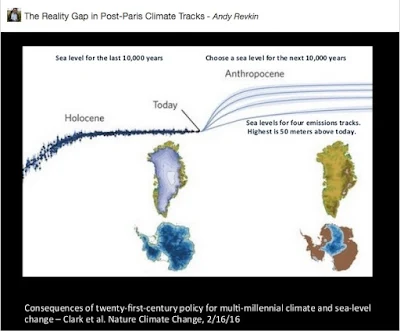
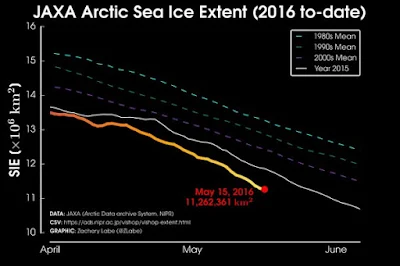
















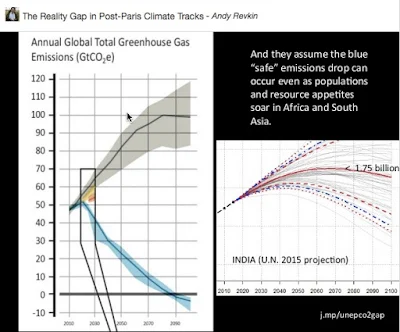







Comments
Could you provide a link or reference for the paragraph beginning: Increased temperatures from global warming are decreasing rain and snowfall....
Take the new Renewable Energy survey!
http://freeonlinesurveys.com/s/Wixv2RMd
RE
Llorando
I was fine, for a while
Smiling once again
But then I saw you last night
Your hand touched me
And the greeting from your voice
And I spoke real well
And you couldn't tell
That I've been
Crying for your love
Crying for your love
Then after your goodbye
I felt all of my pain
Alone and Crying, Crying, Crying
It's not easy to understand
That when I see you once again
That I'll be crying
And here I thought, that I forgot you
But it's true, It's the truth
That I love you even more
Much more than yesterday
Tell me what can I do
You don't love me anymore
And I'll always be
Crying for your love
Crying for your love
Your love took
All of my heart
And it was left crying, crying crying
For your love
Yo estaba bien por un tiempo
volviendo a sonreír
Luego anoche te vi
tu mano me tocó
y el saludo de tu voz
Y hablé muy bien
y tú sin saber
que he estado
llorando por tu amor
llorando por tu amor
Luego de tu adiós
sentí todo mi dolor
Sola y llorando, llorando, llorando
No es fácil de entender
que al verte otra vez
yo esté llorando
Yo que pensé que te olvidé
pero es verdad, es la verdad
que te quiero aun más
mucho más que ayer
Dime tú que puedo hacer
¿No me quieres ya?
Y siempre estaré
llorando por tu amor
llorando por tu amor
Tu amor se llevó
todo mi corazón
Y quedo llorando, llorando, llorando, llorando
por tu amor
Relative to the current exchange between Charles Hall and Ugo Bardi on the EROEI of solar PV. Hall gives a number between 2 and 3 while Bardi thinks the number is more like 11 or 12. Bardi's response to Hall is that it all depends on what sort of society you are trying to support.
http://www.resilience.org/stories/2016-05-27/the-real-eroi-of-photovoltaic-systems-professor-hall-weighs-in
There is much more discussion on Bardi's website.
The thought occurs to me that the early days at The Farm may shed some light on the subject. Or perhaps you know about some more current EcoVillage experience which might be helpful. The key question, as I see it, is 'what type of society are we trying to power with PV and other renewable technologies?' And whatever answer we come up with has to be applicable to everyone on Earth. Which means that it is not a solution to assume, as in the early days at The Farm, that one could simply go out into the 'gentile' world to work for wages and earn money. We have to imagine a new economy and sociology and medical system and so forth which is operating with a much smaller amount of energy. But the current system is a very tightly linked network which evolved in a period of time when energy was plentiful.
PV panels are products of a sophisticated, global economy. How would one go about the process of triage...deciding what we need to save and what we can sacrifice...even if we had a political mechanism in place to make such decisions?
So I have more of a suggestion than question. Can you shed some light on how we might go about downsizing? Or do you think a collapse plus rebuilding from the rubble is the likely course?
Thanks...Don Stewart
"whatever answer we come up with has to be applicable to everyone on Earth" seems to me a non sequitur if the subject is PV.
Commerce, health and communications systems can function fine in Guatemala, Cuba or Kenya and would not require either PV or fossil energy to do so.
My book, the Financial Collapse Survival Guide and Cookbook, provides a simple transition path. Go to the circuit breakers and turn them off. Same for water and sewer, phone, etc. Get used to that before turning anything back on, or maybe choose not to.
This is roughly analogous to The Early Farm. We lasted more than a decade in that mode, although, as you say, we could always sneak away for popcorn and a movie.
What I had in mind with 'applicable to everyone on Earth' relates to this link from Geoff Lawton:
http://www.fastcoexist.com/3060167/this-new-neighborhood-will-grow-its-own-food-power-itself-and-handle-its-own-waste/7
What we have is a 'sustainable' community which is 40 miles from Amsterdam and seems to me to use a lot of very high tech stuff which may not be available if fossil fuels go away or if global financial Armageddon strikes. In other words, some considerable self-reliance is being attained in a bubble community, but the self-reliance is heavily dependent on continued BAU from the outside world.
I have recently been watching Jan Troell's 6 hour extravaganza on Swedish emigrants to the US in the 1850s. Troell is a documentarian and pays a lot of attention to detail. While the emigrants on the Minnesota frontier were clearly more self-reliant than most of us today could ever hope to be, they also benefitted from lifelines to the more civilized world. For example, when they get ready to build a proper house, they are able to purchase framed windows. And they were able to travel across inland waters on paddle wheelers.
I believe you have stated that you are of the 'soft landing' persuasion. I BEHAVE as if a soft landing is possible (gardening, etc.), but I see very few of us who seriously try to get along without PVC pipes.
IF some wise leader were trying to figure out what sorts of industrial materials we should seriously try to keep available over the next 50 years, PVC pipe might be among them. But if PVC pipe is not a realistic goal, then we need to seriously rethink plumbing and irrigation and such subjects in the industrialized world.
Don Stewart
There is some informative discussion on Ugo's blog today (May 28).
Also, here is one view of our problem and opportunity. The advantage of this particular view is that it derives from a mathematical model which can be manipulated to give numerical results. The disadvantage of the view is that it is, perhaps misleadingly, precise...which may cause us to trust it more than we should. Nevertheless, I offer it as providing an internally consistent view of how solar and wind and electric vehicles fit into a larger picture...Don Stewart
Harquebus quoted on page 1 of these comments
“Whenever somebody with a decent grasp of maths and physics looks into the idea of a fully renewables-powered civilised future for the human race with a reasonably open mind, they normally come to the conclusion that it simply isn’t feasible.”
http://www.theregister.co.uk/2014/11/21/renewable_energy_simply_wont_work_google_renewables_engineers/
We are completely convinced that the above statement is true, but that does not mean that renewables can not be of significant use to modern society. It is not that they can replace fossil fuels, but they could considerably extend their useful life span. That could be as much as a century. At the world’s present consumption rate the oil age will be ending in 13 years, and society will have to pay a very high price to get it there. We are now witnessing the bankruptcy of the Petro-States, and much of the Western world’s petroleum industry. Over the next five years it will become very apparent as to what is happening.
Geothermal, wind, tidal power, small hydroelectric, and in some cases solar can replace much of the electricity production of the world. Electricity that is now being supplied from our rapidly depleting fossil fuels. More than 90% of auto trips are less than 25 miles round trip. Well within the range of EV’s. Most of our internal combustion engine usage can be replaced. ICs could be used only for longer trips, and larger vehicles.
The amount of petroleum that can be economically converted to finished fuels is now less than 300 Gb, and falling rapidly. The ERoEI of petroleum is now 8.7:1, and at 6.9:1 it will no longer be economically viable to convert the average barrel into finished fuels. The world’s petroleum industry is now attempting to increase production to compensate for its declining ERoEI. It is referred to as maximizing cash flow, when in reality it is because of depletion their barrels can no longer command a price high enough to pay for themselves. The problem lies in the quarterly outlook of business. A geothermal plant may not be economical today, but in five years it is likely to become more than competitive with fossil fuel powered electrical production. But that plant will have to be built BEFORE the fossil fuels needed to construct it have become completely depleted out. It could then save millions of boe to be used for construction of more plants.
Over the next decade society will have to provide $trillions to keep the petroleum industry operating. Maybe by then it will begin to recognize that the present state of business is not sustainable in a depletion ravaged fossil fuel world. Then again maybe it will continue to stubble along until it falls into its own self dug hole.
http://www.thehillsgroup.org/
http://peakoil.com/alternative-energy/the-real-eroi-of-photovoltaic-systems/comment-page-2#comment-267131